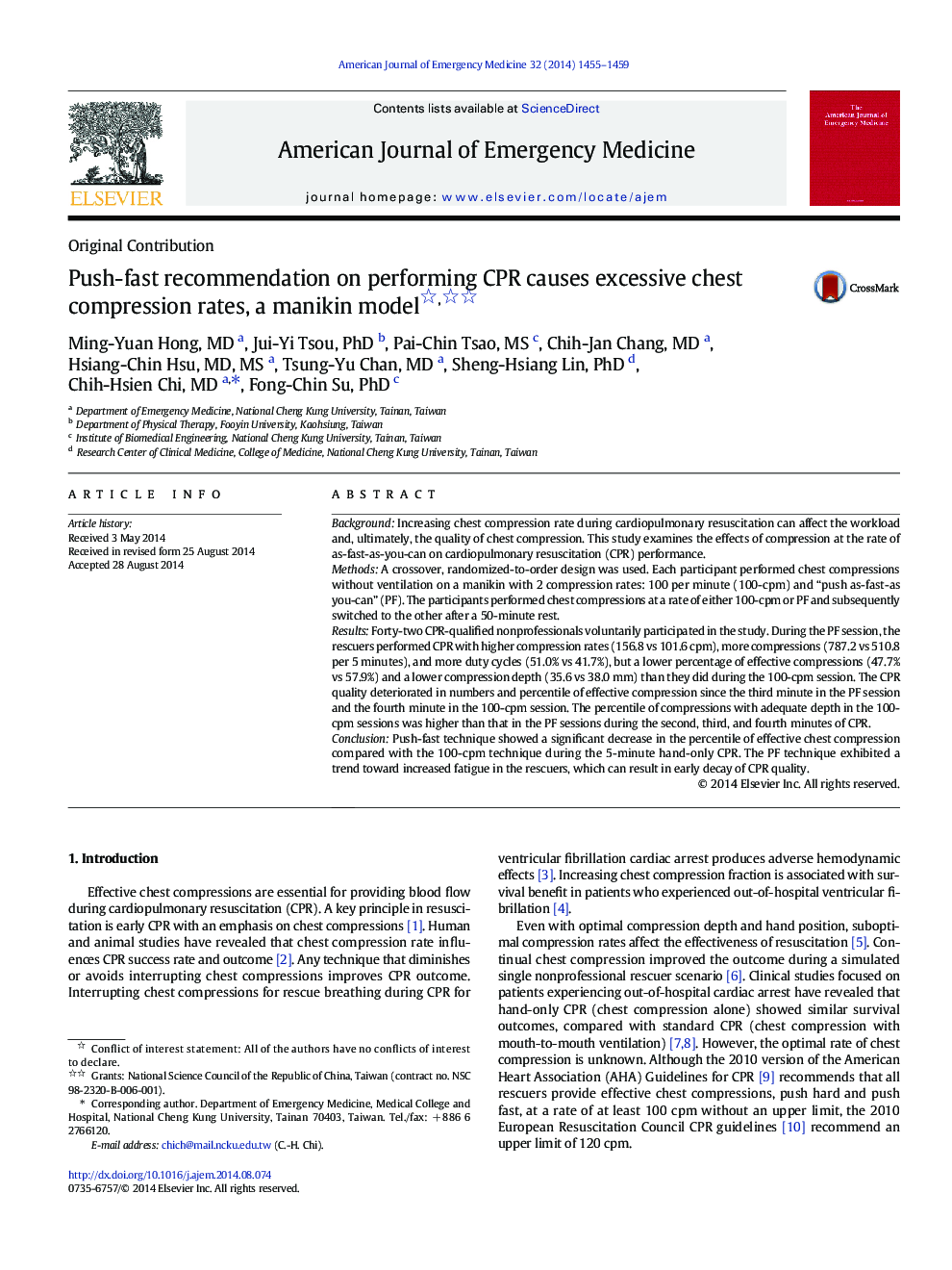| Article ID | Journal | Published Year | Pages | File Type |
|---|---|---|---|---|
| 3224068 | The American Journal of Emergency Medicine | 2014 | 5 Pages |
BackgroundIncreasing chest compression rate during cardiopulmonary resuscitation can affect the workload and, ultimately, the quality of chest compression. This study examines the effects of compression at the rate of as-fast-as-you-can on cardiopulmonary resuscitation (CPR) performance.MethodsA crossover, randomized-to-order design was used. Each participant performed chest compressions without ventilation on a manikin with 2 compression rates: 100 per minute (100-cpm) and “push as-fast-as you-can” (PF). The participants performed chest compressions at a rate of either 100-cpm or PF and subsequently switched to the other after a 50-minute rest.ResultsForty-two CPR-qualified nonprofessionals voluntarily participated in the study. During the PF session, the rescuers performed CPR with higher compression rates (156.8 vs 101.6 cpm), more compressions (787.2 vs 510.8 per 5 minutes), and more duty cycles (51.0% vs 41.7%), but a lower percentage of effective compressions (47.7% vs 57.9%) and a lower compression depth (35.6 vs 38.0 mm) than they did during the 100-cpm session. The CPR quality deteriorated in numbers and percentile of effective compression since the third minute in the PF session and the fourth minute in the 100-cpm session. The percentile of compressions with adequate depth in the 100-cpm sessions was higher than that in the PF sessions during the second, third, and fourth minutes of CPR.ConclusionPush-fast technique showed a significant decrease in the percentile of effective chest compression compared with the 100-cpm technique during the 5-minute hand-only CPR. The PF technique exhibited a trend toward increased fatigue in the rescuers, which can result in early decay of CPR quality.
